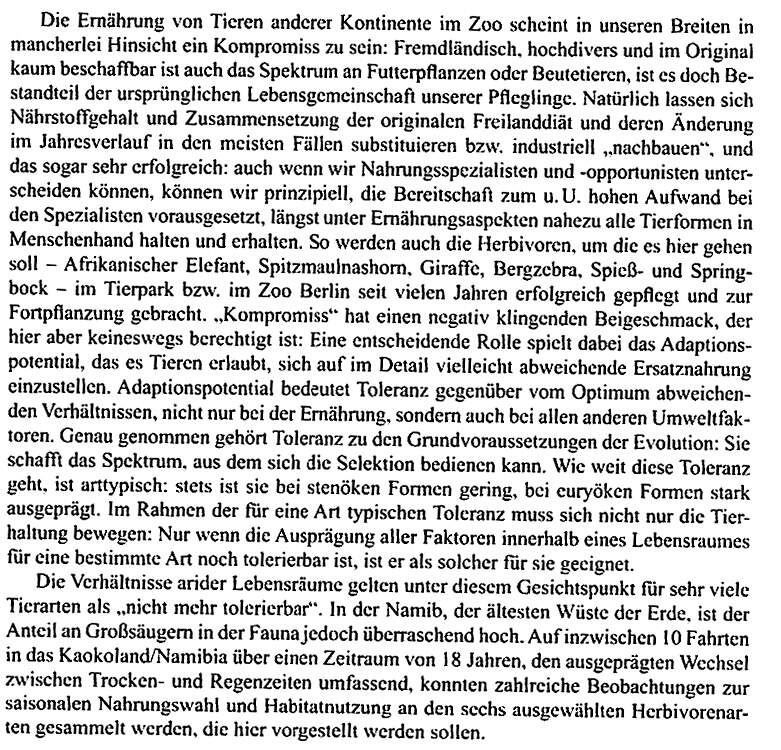SEELY, M. (1987)
Die Namib: Die Naturgeschichte einer uralten Wüste.
110 Seiten, mit zahlreichen s/w- und-Illustrationen und Farbfotos.
Shell Oil Namibia Ltd. Windhoek.
Deutsche Ausgabe 1988.ISBN 0-620-11688-9.
3. Auflage der englischen Version 2004, ISBN 10: 9991668160 / ISBN 13: 9789991668161.
Kundenrezension:
Ob die wissenschaftlichen Erläuterungen des 1988 auf Deutsch erschienenen Shell-Führers alle dem aktuellen Stand der Forschung entsprechen, vermag ich nicht zu beurteilen. Das 100 Seiten starke Büchlein im A-5-Format enthält nach einer etwa 20 Seiten umfassenden Einführung kurze Beschreibungen von knapp hundert Orten bzw. Landschaften mit ihren Pflanzen und Tieren. Zahlreiche Skizzen ergänzen und veranschaulichen die Beschreibungen. Außerdem sind in der Mitte der Broschüre auf 24 Seiten fast 60 Farbfotografien abgedruckt. Eine ebenso ideale Vorbereitung auf eine Reise nach Namibia wie ein Reisebegleiter zum Nachschlagen vor Ort, aber auch zur Vertiefung einer Reise zu empfehlen. Ein Wermutstropfen: Vermutlich altersbedingt (Druck vor mehr als 20 Jahren?) lösen sich in meinem Exemplar einzelne Blätter aus dem Leim.
seely-biblio
OLIVIER, W. & S. (1993)
A Guide to Namibian Game Parks.
248 Seiten, mit Strichzeichnungen, Farbfotos und Landkarten.
Longman, Namibia (Pty) Ltd, Windhoek. ISBN 99916-1-005-7.
Inhalt:
Es wird eine Übersicht über Land und Leute, Fauna und Flora gegeben, Es folgen wesentliche Informationen zum Besuch der Parks und Tipps für die Wildbeobachtung und -fotografie. In 21 Kapiteln wird auf die wichtigsten Parks eingegangen, ein weiteres Kapitel widmet sich kleineren Destinationen.
olivier-biblio
STUART, C. & T. (1993)
Guide to the Southern African Game & Nature Reserves.
South Africa, Namibia, Botswana, Zambia, Malawi, Zimbabwe.
374 Seiten, zahlreiche Farbfotos und Landkarten.
3rd überarbeitete und aktualisierte Auflage. Struik Publishers (Pty) Ltd. Cape Town. ISBN 1-86825-558-1.
Inhalt:
Knappe Hinweise und Texte zu 411 Naturschutzgebieten im südlichen Afrika geordnet nach 19 Regionen.
stuart-biblio
SCHOEMAN, A. (1996)
Skeleton Coast.
148 Seiten, mit zahlreichen Farbfotos.
Southern Book Publishers, Halfway House. ISBN 1-86812-593-9.
Anbietertext:
The Skeleton Coast of Namibia - an area once feared and shunned because of its treacherous coastline - is now prized as a place of beauty and tranquility, a place of magnificent solitude. Apart from the explorers, prospectors and miners drawn to the Skeleton Coast by its legendary mineral wealth, only small groups of people have visited this protected area in northwestern Namibia, and its mystery remains largely intact. It is undoubtedly high on the list of the world s most unusual, fascinating and scenically beautiful places. Through her captivating photographs and absorbing text, Amy Schoeman shares with the reader the strange beauties of her life s passion. The superb photographs capture the life of the desert, its forms and colors, and the moods of its ever-changing landscapes, while the text details the geology, climate, richly diverse plant and animal life, the pattern of its history - from the early Portuguese explorers to the many mining ventures of the previous century - and the proclamation of the area as a park in 1971."
KÜPPER, C. & T. (1999)
Namibia Naturschutzgebiete - Reisehandbuch.
572 Seiten, auf zusätzlichen Seiten Reiseangebote, 282 teils farbige Abbildungen, Landkarten.
Iwanowski's Reisebuchverlag. Dormagen. ISBN 3-923975-60-0.
Anbietertext:
Wer mehr über die Natur Namibias erfahren möchte, ohne selbst Naturwissenschaftler zu sein, sollte sich in dieses Reisehandbuch vertiefen. Dabei werden auch Natursehenswürdigkeiten außerhalb der Naturschutzgebiete Rücksicht genommen. Zu einem allgemeinen Überblick über Namibias Natur finden Sie regionale Tipps und Beschreibungen der Naturschutzgebiete. Die praktische Reisekarte zum Herausnehmen ergänzt das Reisehandbuch.
IRISH, J. (2008)
Biological characterization of the Orange-Fish River Basin, Namibia. Report produced for the Ephemeral River Basins in southern Africa (ERB) Project.
Desert Research Foundation, Namibia (DRFN). Windhoek.
Summary:
The OFRB is biogeographically diverse and represents all four biomes of Namibia. Despite almost 3,000 species being known from there, biodiversity knowledge of the OFRB as reflected in the datasets used here is too unevenly spread to conclusively identify biodiversity and endemism hotspots. However, some candidates do emerge. They are the western escarpment, including the Naukluft area and the Rosh Pinah/Obib area; the Huns/Fish River Canyon area; the Karas Mountains; Brukkaros Mountain and the Warmbad area. Some parts of the OFRB are particularly undersampled and could benefit from further sampling/inventorying. For much of the OFRB, eco-tourism represents the most viable, sustainable and profitable land-use. Several useful or important species of plants or animals could be developed to enhance tourism potential, including the re-introduction of historically extinct species. The status of the presumed extinct ‘Cape warthog’ may merit further investigation.
GÜRTLER, W.-D. (2011)
Zur Ernährung und Raumnutzung einiger afrikanischer Pflanzenfresser in aridem Umfeld.
MILU, Mitteilungen aus dem Tierpark Berlin, Band 13, Heft 4, S. 576 - 594, 2011, ISSN 0076-8839
Zusammenfassung:

CURTIS, B. ROBERTS, K.S., GRIFFIN, M., BETHUNE, S..HAY C.J. & KOLBERG, H. (1988)
Species richness and conservation of Namibian freshwater macro-invertebrates, fish and amphibians.
Biodiversity & Conservation 7: 447-466.
Abstract:
Namibia is an arid country but has a diverse array of wetland habitats ranging from ephemeral water bodies and rain-pools, artesian springs supporting small perennial pools and streams, to the large perennial rivers of the north-east with their associated floodplains. These rivers drain wetter areas north of Namibia and contribute many tropical species to Namibia's wetlands. There are 778 described species of macro-invertebrates representing eight phyla with 81 endemics. Many invertebrates still have to be identiÆed or described but presently the greatest endemism occurs among the Ostracoda (18 species), Coleoptera (17), Diptera (14), Anostraca (six) and Amphipoda (Æve species). In total, Namibia has 50 species of frog with three endemics. No caecilians or salamanders occur in Namibia. There are 114 species of freshwater Æsh with Æve endemics. Most Namibian wetlands occur outside protected areas. Over-exploitation of wetland resources and Øow regulation are currently major threats, but new environmental legislation being formulated is based on the goal of sustainable use